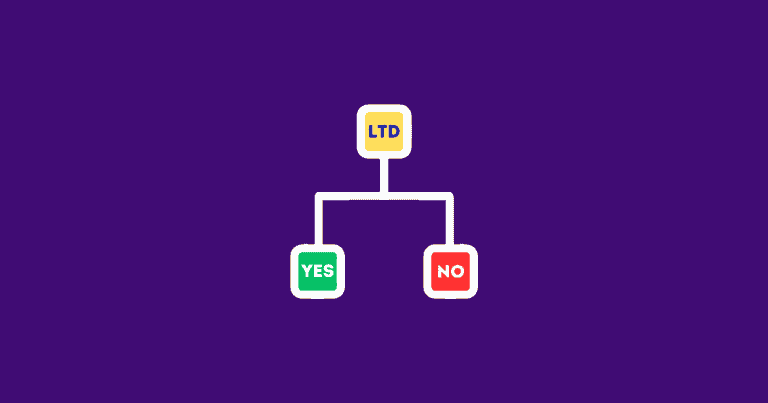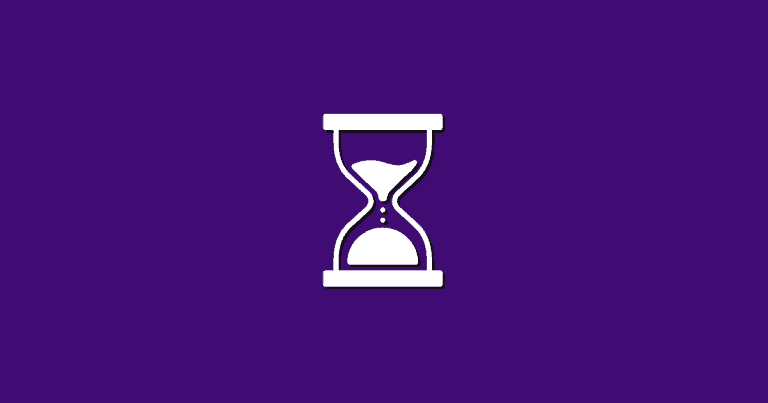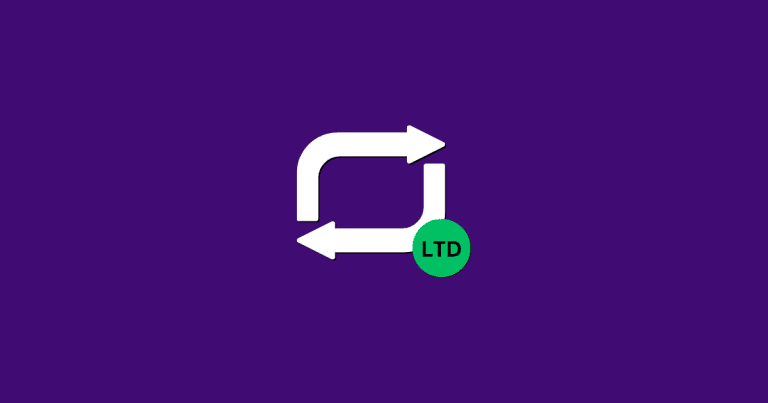What are the Prerequisites to Run a SaaS Lifetime Deal?
The SaaS marketplace has become highly competitive over the last decade.
SaaS users are bombarded with brand-new SaaS tools every day. In such a saturated SaaS market, unbeatable value offerings and exceptional growth are necessary to hold your place.
It will help you get new customers, and retain the existing ones. And it may even make your SaaS company immune to disruption to some level.
One of the first steps SaaS startups take to achieve such growth is by launching a lifetime SaaS deal.
Running a Lifetime SaaS Deal has many benefits for a growth-focused SaaS company. And a Lifetime SaaS Deal Launch is ideal for first-time SaaS entrepreneurs and SaaS startups.
Though it has become relatively easy now, you cannot decide to run a Lifetime SaaS Deal in the morning and go live in the evening. That is if you want your Lifetime SaaS Deal launch to have the most impact on your SaaS Start-up growth.
Discover the prerequisites to run a Lifetime SaaS Deal to get the most benefits from your LTD launch.
If you are a first-time SaaS entrepreneur and new to the concept of growth-inducing Lifetime SaaS Deals, let’s take a quick look.
What is a SaaS Lifetime Deal?
A SaaS Lifetime Deal is a lifetime SaaS license that SaaS Start-up companies sell on a SaaS Marketplace like SaaS Mantra to a limited number of users.
It allows the SaaS Start-up companies, especially bootstrapped ones, to raise capital and gain exposure in a short time among several other benefits of a SaaS Lifetime Deal launch.
With that out of the way, it brings up another question.
Who can run a SaaS Lifetime Deal? Or more precisely, can you run a SaaS Lifetime Deal for your SaaS?
Let’s find out!
Who Can Run a SaaS Lifetime Deal?
As said before, running SaaS Lifetime Deals is ideal for first-time SaaS Entrepreneurs. But it does not mean that the benefits of launching a SaaS Lifetime Deal are limited for the other SaaS Start-ups.
To begin with, you should be clear about why you want to run a SaaS Lifetime Deal.
It could be anything from getting more new users to your SaaS tool to raising capital to further product development. Or when you want to boost growth and scale your business quickly.
Some SaaS founders even run a SaaS Lifetime Deal to quickly raise funds for their other SaaS venture.
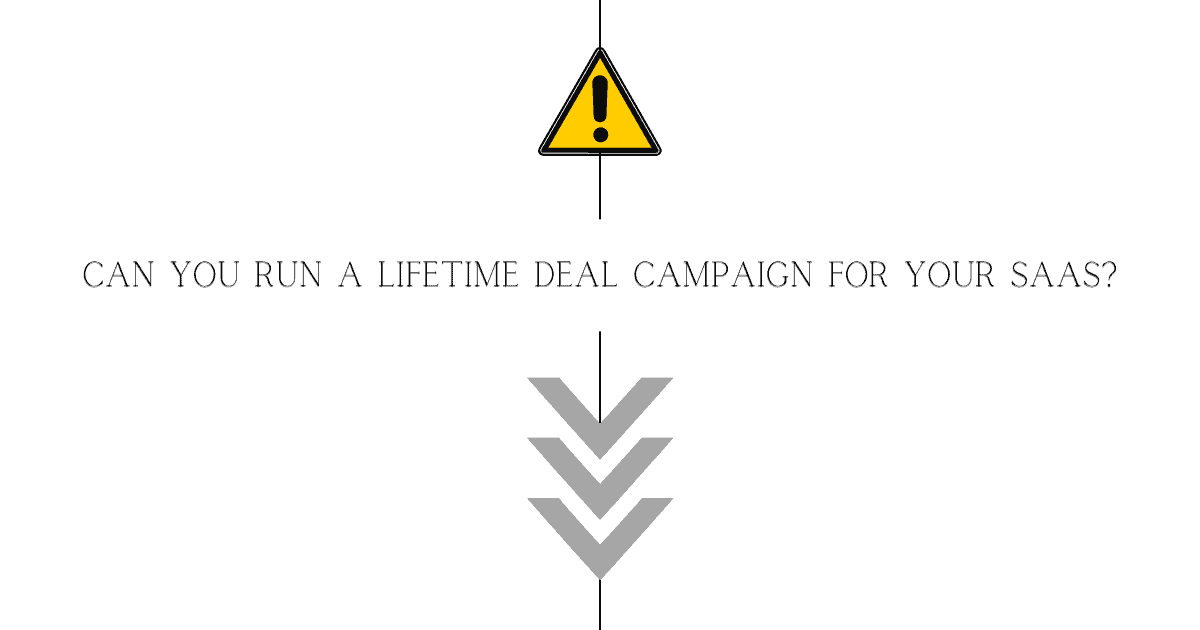
If you have a working SaaS Tool that solves a problem for your target audience, a SaaS Lifetime Deal launch is for you.
Here is a list of indicators that show SaaS Lifetime Deals can benefit you.
- You are a SaaS Start-up company.
- Your new user signup rate has slowed down or plateaued.
- Your SaaS Start-up revenue is below the industry median.
- You are bootstrapped and considering fundraising.
- Your product development has slowed down.
- You do not have a dedicated Sales and Marketing team.
These are a few of the several indicators that you need to run a SaaS Lifetime Deal.
Regardless of having a solid reason, you may also consider running a Lifetime Deal. For example, you may run a Lifetime Deal to quickly raise funds for a separate project.
If you are a SaaS Founder and resonate with any of these reasons, you should consider launching a SaaS Lifetime Deal.
To run a SaaS Lifetime Deal, and get the most benefits, there are a few prerequisites.
Prerequisites to Run a SaaS Lifetime Deal
There are several prerequisites to running a SaaS Lifetime Deal, and some are niche specific.
The following are the common prerequisites that every SaaS Start-up company must satisfy before launching a SaaS Lifetime Deal for the best results.
1. A Functioning SaaS Tool
It may sound puzzling but read on.
Running a SaaS Lifetime deal requires a functioning SaaS tool. It means that your SaaS tool needs to solve a real problem for your customers.
Most first-time SaaS founders think that your SaaS Tool needs to be perfect to run a SaaS Lifetime Deal. But it is not the case.
Most Lifetime Deal Buyers indeed expect a high-value product since they are paying the money upfront. Although, SaaS Lifetime Deal buyers are also aware that it is not going to be the perfect tool.
Moreover, you can use this as an opportunity to get their feedback and develop their product further. You only have to have a functioning tool for your users.
On the other hand, though Lifetime Deal buyers do not expect minor bugs, you cannot push it.
In other words, if your SaaS Tool is still a beta version, you must wait to run a SaaS Lifetime Deal.
Running a SaaS LTD a little too early in the product development phase can harm your brand name. That is considering a SaaS Marketplace agrees to launch list your SaaS Tool.
2. Lifetime SaaS Deal Goal Setting
Before you start planning your SaaS Lifetime Deal strategy, you must set a goal.
Setting a goal will help you plan your SaaS Lifetime Deal strategy.
What does your SaaS Company expect to achieve by running a Lifetime Deal?
Is it for user acquisition? Is it a part of your growth marketing strategy?
Is it to raise funds for your SaaS Start-up?
Or is it to test the scope of your SaaS Tool?

You must fixate on one goal for which you plan to run the Lifetime Deal for your SaaS Tool. Although, running a SaaS Lifetime Deal can help you achieve two or more objectives for your SaaS company.
If running a SaaS LTD can help you achieve multiple objectives, should goal setting matter?
Absolutely! A SaaS Lifetime Deal launch, though beneficial, should be planned carefully.
Since it is one of the high-growth strategies for SaaS Companies, poor planning and execution can cause cascading effects on your SaaS Growth. One of the reasons is that it helps you properly position your SaaS Lifetime Deal offer in the market.
On the other hand, goal setting also answers important questions.
How long can you run the Lifetime Deals?
If it is to increase revenue in a short period, how many licenses can you sell?
Are there any potential risks attached to your SaaS LTD offer?
Lifetime SaaS Deal Goal setting prepares you and optimizes your strategy for the best outcome.
3. Proper Lifetime Deal Positioning
Launching a Lifetime Deal is also a branding opportunity, among many other things.
Lifetime SaaS Deal positioning can make or break the user perception of your brand. And you should appropriately position and project your Lifetime Deal offer to bring positive results in all aspects.
Setting a clear goal for your Lifetime SaaS Deal campaign can give you an idea for Lifetime Deal positioning.
For example, when you offer your SaaS on Lifetime Deal, how will the regular subscribers perceive it?
Could it affect the brand loyalty of your customers?
One of the ways is to create a clear distinction between your Lifetime Deal offer and the subscription pricing plans. Your target audience should easily understand the difference in value proposition and pricing. And your offer should justify the difference.
Also, you can consider getting selective exposure for your Lifetime Deal offer based on the goal of the SaaS LTD launch. The SaaS Marketplace that runs your SaaS LTD will play a key role in what kind of your LTD launch receives.
Your SaaS Lifetime Deal positioning must also clarify common user questions. It should answer questions like, can your buyers stack licenses? Can they upgrade at any time?
Proper Lifetime SaaS Deal positioning will give you clarity on your objectives. It also effectively communicates the value of your SaaS Lifetime Deal to your target audience.
4. Get The Right Lifetime Deal Pricing
Your SaaS Deal price is the first thing a buyer will look at when you launch a Lifetime SaaS Deal. The pricing structure plays a crucial role in your SaaS Lifetime Deal campaign success.
It is not just about the price per license. It is about the Customer Lifetime Value (CLV).
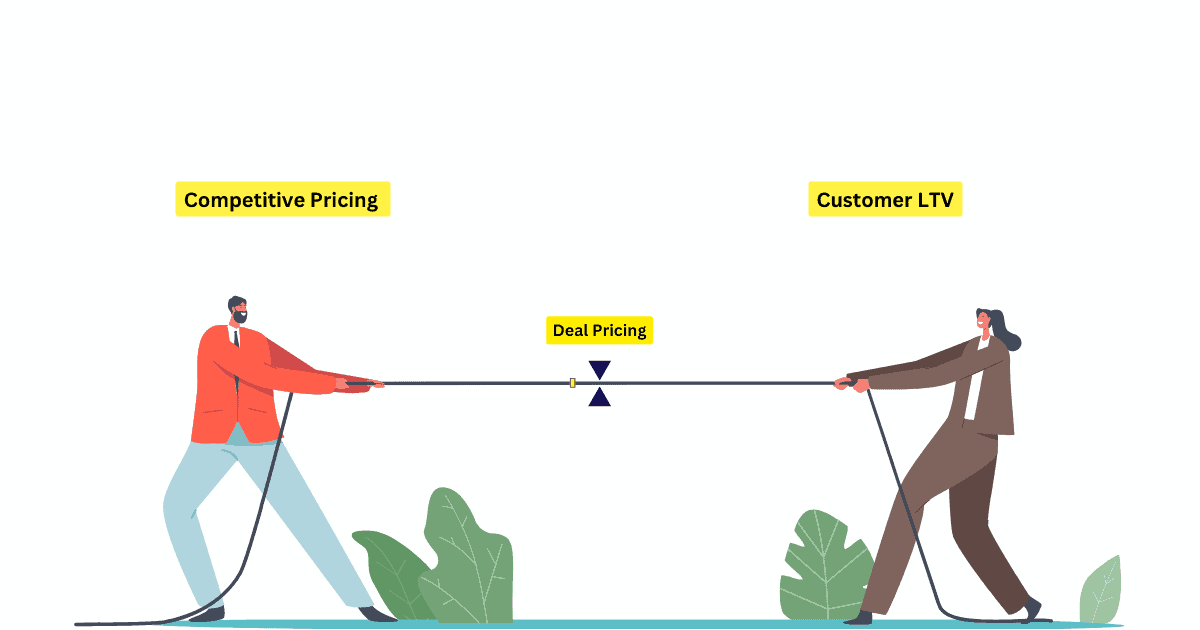
A rule of thumb is to price your SaaS Lifetime Deal close enough to the average Customer Lifetime Value (CLV). Customer Lifetime Value is the total worth of a customer throughout their relationship.
It is because, if you charge too low a price, you may lose the financial benefits of offering a Lifetime SaaS Deal. But that is only half the concern.
The low price also attracts a lot of users. It will considerably reduce the runway period for your SaaS Start-up. And at the same time, your MRR is unlikely to improve immediately.
If you are offering a low-price SaaS Lifetime Deal, consider reducing the number of SaaS Lifetime Deal licenses.
On the flip side, you also should not overpromise in the value proposition of your SaaS Lifetime Deal.
What will be your response in case of over-usage of the SaaS Tool?
Do you have a pricing plan in place for the over-usage upgrade?
Do you want to include all future updates of the SaaS Tool with the Lifetime Deal license?
Can you afford to allow license stacking?
Try to figure out the answers to such questions. It will help you decide on an optimal price for your SaaS Lifetime Deal campaign.
5. A Standby Customer Support Team
Responsive customer support is a prerequisite if you are concerned about branding like every successful SaaS Start-up.
You need to ensure that there is a standby support team ready to assist your customers as and when required.
Launching a Lifetime SaaS Deal often results in an influx of customers. Your users are likely to find a bug or a non-responsive action or just want assistance on how to use a feature.
Building Customer Relationship at such points is crucial for your branding. In the long term, it will help your SaaS company achieve the flywheel effect.
On the other hand, you must also prepare for the worst-case scenario. A sudden influx of users could overload your servers and cause a system crash. When things go south, your customers will ring an alarm.
If you are a small team of only developers, it can complicate things for your SaaS Company.
Will you be working on fixing the system crash or responding to your customers?
It has happened to some SaaS Start-up companies, and it may happen to yours. Have a dedicated customer support team, no matter how small, to respond to your customer queries.
6. Optimize Website Speed & Security
Website speed and security are two critical factors that determine whether a user stays on your website or moves away from it.
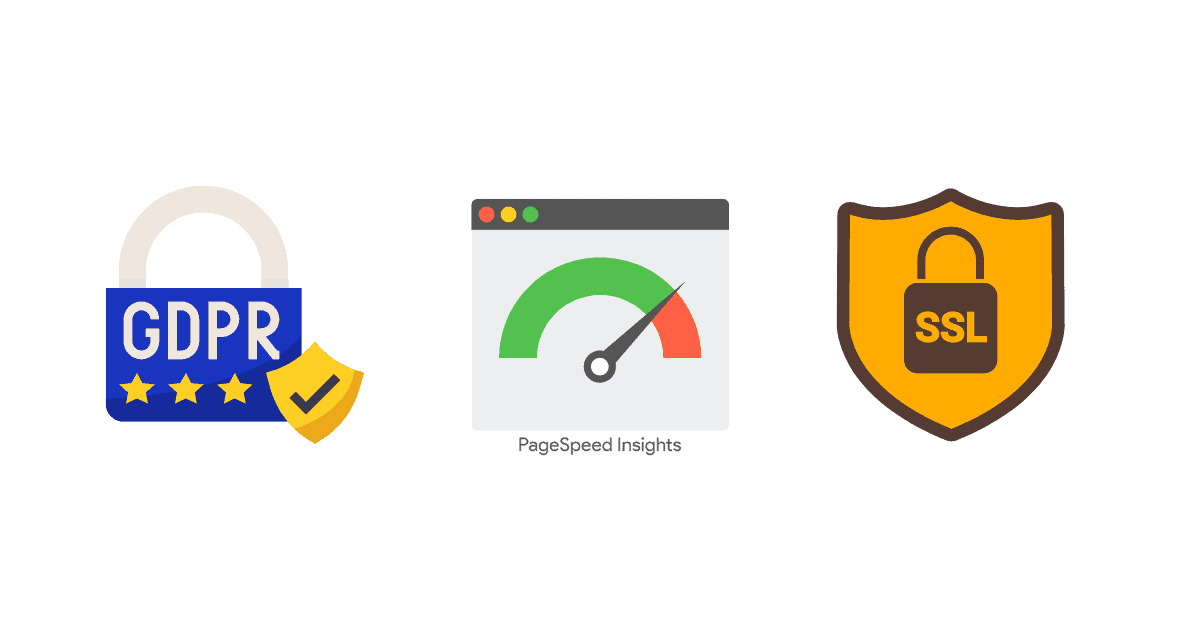
Your website needs to load fast. Users expect websites to load within 2 seconds. If they wait longer than this, they tend to leave the site. And even if they stay, they might not return.
It will be a deciding factor if you plan to convert your Lifetime Deal buyer into subscribers in the future.
Your business website security is another deciding factor, even a dealbreaker, for many SaaS users.
Since most SaaS users are likely to be another business, they do not compromise on data security. Users expect your SaaS Tool to be GDPR compliant.
Besides, even little things like your website’s SSL certificate play a role in earning your customers’ trust.
For example, if your website SSL Certificate expires, all web browsers display a warning before they can manually access your website.
It is a prerequisite, not only for launching a Lifetime SaaS Deal but for sustained growth of your SaaS Start-up.
Get Lifetime Deal Ready
Launching a Lifetime SaaS Deal is one of the best ways to build a brand around your SaaS product.
The key to success lies in taking care of the prerequisites mentioned above. Taking care of these prerequisites helps you get the most out of running a SaaS Lifetime Deal for your business.
Beyond the known benefits, launching a SaaS Lifetime Deal also acts as a sandbox to experience what it is like to scale up your business. It brings a new level of clarity to your SaaS Company while bringing the necessary exposure to scale up.

